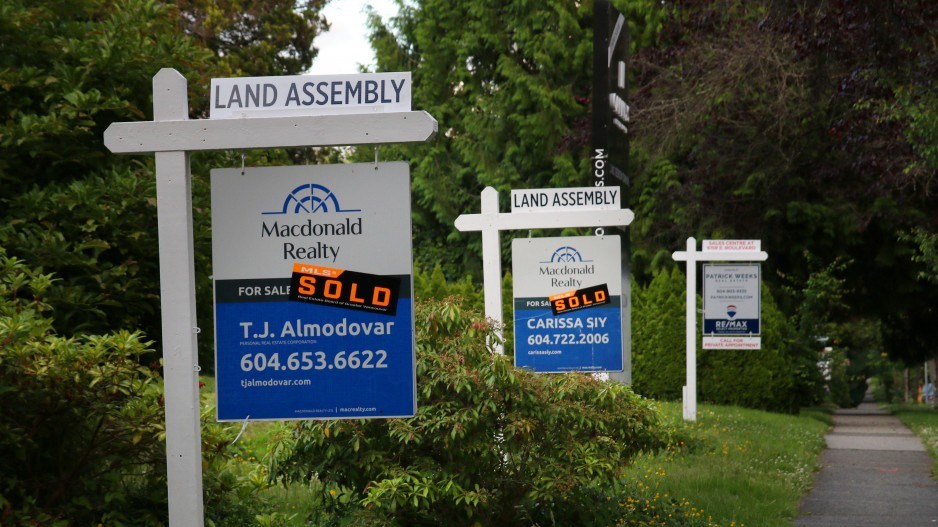B.C.’s resale market performance strengthened in May with higher home sales and prices as conditions favoured sellers.
MLS sales rose 5.7 per cent to a seasonally adjusted 7,106 units, surpassing last year’s level by 6.7 per cent. While 44 per cent below the pandemic peak in March 2021, sales were 13.4 per cent above February 2020.
Sales increased across most of B.C.’s markets, including the Fraser Valley (1.7 per cent), Kootenay (17.6 per cent), Victoria (6.2 per cent) and Chilliwack (25.5 per cent). The bulk of net growth reflected higher Greater Vancouver real estate board sales (7.5 per cent). In contrast, Vancouver Island reported a 4.5-per-cent monthly declines in sales, pausing growing momentum.
B.C.’s average price rose for a fourth straight month with a 5.1-per-cent gain to $1.01 million in May, following a 4.1-per-cent increase in April. The average price was just 3.5 per cent lower than the pandemic peak in March 2021 and 43 per cent above February 2020. Much of the increase could reflect buyer catch up after a 2022 pause, while lack of supply continued to drive home prices higher. Greater Vancouver home values rose three per cent to $1.283 million; prices were also up 7.1 per cent in the Fraser Valley and 1.7 per cent in Victoria. The provincial benchmark price – which adjusts for housing attributes – increased 1.4 per cent in B.C. in May.
Market momentum is likely to be cut short as Bank of Canada hikes hit short-term variable borrowing costs. Fixed-rate mortgage costs have already moved up. This will curb demand and cut into both sales and listings once again, while capping prices. Meanwhile, underlying demand is strong as immigration flows remain robust and ahead of year-ago patterns, and the economy remains resilient.
B.C. housing starts dropped in May, following two consecutive monthly increases. Housing starts fell by 34.4 per cent to reach 38,217 units at a seasonally adjusted annualized pace. The decrease in housing starts was led by a decline in multi-family home starts, which fell 39 per cent to 32,010 units. These types of swings are common. On the other hand, single-detached housing starts increased by 6.8 per cent to 6,207 units. This was less than half the rise seen in April.
Among census metropolitan areas (CMAs), Vancouver reported a decline of 45.1 per cent in housing starts in May to an annualized 27,139 units, reversing an increase of nearly 36 per cent in April. This drove the provincial decline. Abbotsford-Mission saw housing starts skyrocket by 409.5 per cent, while they leaped by 386 per cent in Chilliwack. In Victoria, housing starts increased by 64.9 per cent and in Kelowna, starts were up 44.8 per cent during the month.
During the first five months of 2023, actual unadjusted urban-area housing starts in B.C. came in at 18,776 units – 23.7 per cent higher than the same period last year. This rise was mostly due to a surge in multi-family home dwellings starts, which rose to 16,517 units compared with 12,013 units in 2022. Single-detached units fell 28.7 per cent to 2,259 units in the five-month period ending in May.
The strength in new construction has been surprising. However, we anticipate a downturn in the coming months. Multi-family projects are pre-sold well in advance and current patterns reflect construction of projects marketed and sold years ago. The slowdown in activity last year is likely to curb future condominium housing starts, while rental building will also be stressed economically due to the high-rate environment.
Bryan Yu is chief economist at Central 1.







